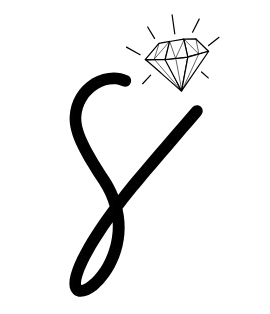I’m Mustajab. A writer by practice, a gem lover by instinct.
Sapphrion isn’t a brand. It’s not a startup. And it’s definitely not a polished content project designed to chase clicks. It’s something slower. More obsessive. More personal.
It’s a digital journal for the curious—those who pause in museum gift shops not for the souvenirs, but to linger a moment longer in front of a Roman garnet, or a Victorian mourning brooch. Those who see beauty not just in sparkle, but in story, setting, and silence.
Why jewellery, why now?
I’ve written for platforms like CureOnCall.com, where the work revolves around care, clarity, and trust—values I deeply admire. I’ve also contributed to Speakawesomely.com, a publication that prizes clean, considered storytelling over fluff.
But when it came to gems and jewellery—my personal fascination—I couldn’t find a space that felt quite right.
Most jewellery blogs fell into two camps:
- The hyper-technical, filled with cut grades, lab reports, and diamond simulants.
- Or the hyper-mystical, leaning into chakras, vibrations, and celestial pairings.
Both have their place—but neither spoke to the way I see gemstones.
To me, a sapphire isn’t just a corundum mineral or a throat chakra activator. It’s a story. A piece of geography, of geology, of memory. It might have been mined under harsh conditions, worn through a wedding and a divorce, pawned and reclaimed, reset and reframed. It holds fingerprints. Dust. History. Weight. Energy.
Sapphrion is my way of holding space for that nuance.
What you’ll find here
This blog is about gems and jewellery as cultural artefacts.
I treat stones and settings the way some treat literature: with reverence, curiosity, and just enough scepticism. I’m drawn to the forgotten ones—the flawed ruby, the chipped cameo, the paste brooch from a 1930s drawer. I believe even a faux stone has a story worth telling.
Expect to find:
- Long-form essays on the history of specific stones or styles
- Deep dives into symbolism, provenance, and craftsmanship
- Personal reflections on collecting, gifting, losing, and wearing jewellery
- Travel-inspired stories from markets, museums, and mislabelled thrift store finds
- Occasional interviews with jewellers, lapidaries, and vintage collectors
Some posts are heavily researched, with footnotes and source links. Others are looser—thoughts scribbled after handling a 1920s mourning ring or hearing a myth about a cursed opal.
Sometimes I chase down a rumour about a missing emerald from a French treasury. Sometimes I just write about how a cheap rhinestone brooch reminded me of my grandmother.
This is not fast content
Sapphrion is—and will probably always be—a one-person project.
I write at my own pace. I don’t follow editorial calendars. I publish when something stirs me. There are no SEO-driven headlines, no roundup lists, no Pinterest infographics on “how to clean your diamond at home in 3 steps.”
There are plenty of sites doing that already.
Sapphrion exists for something else: to slow down. To linger. To wonder.
I believe jewellery deserves that.
Why it matters
In a world where “fast fashion” has crept into the jewellery space, where mass-produced gold vermeil is sold next to vending-machine trinkets, there’s still room for reverence. For context. For emotion.
We often forget that gems are older than civilisation—that your amethyst earrings might have formed while dinosaurs still roamed. Or that a brooch in your family might have outlived five generations.
Jewellery isn’t just personal—it’s eternal. And that deserves better writing, better thinking, and better attention.
Stay a while
If you’re here, it probably means you care about more than just trends or sparkle. You want to know why a stone was cut that way. Who wore it. How it was lost, or found again.
Whether you collect heirlooms or just love stories carved into stone, I hope Sapphrion offers you something to savour.
No urgency. No rush. Just quiet wonder.
